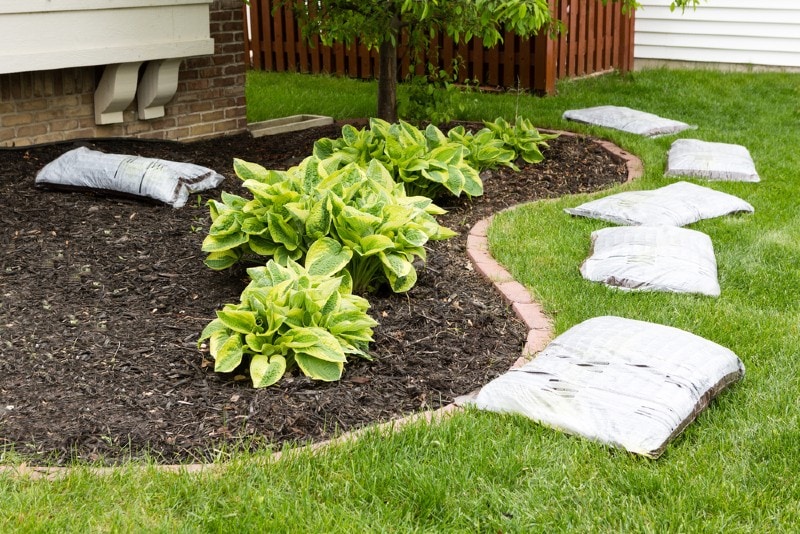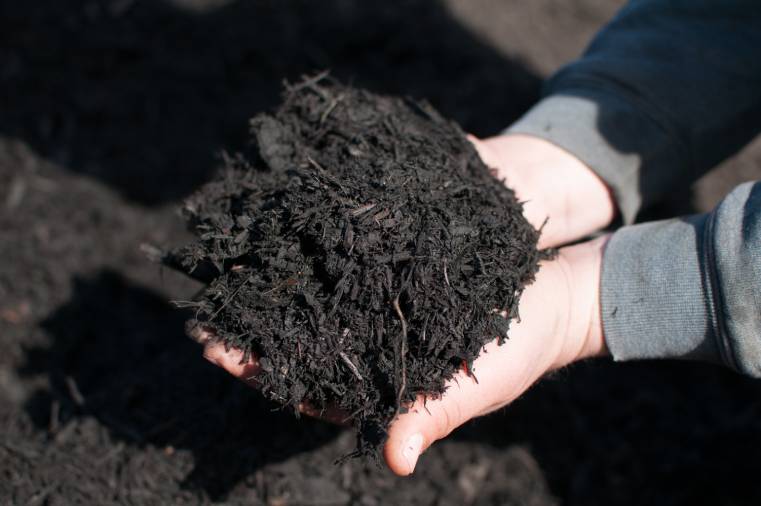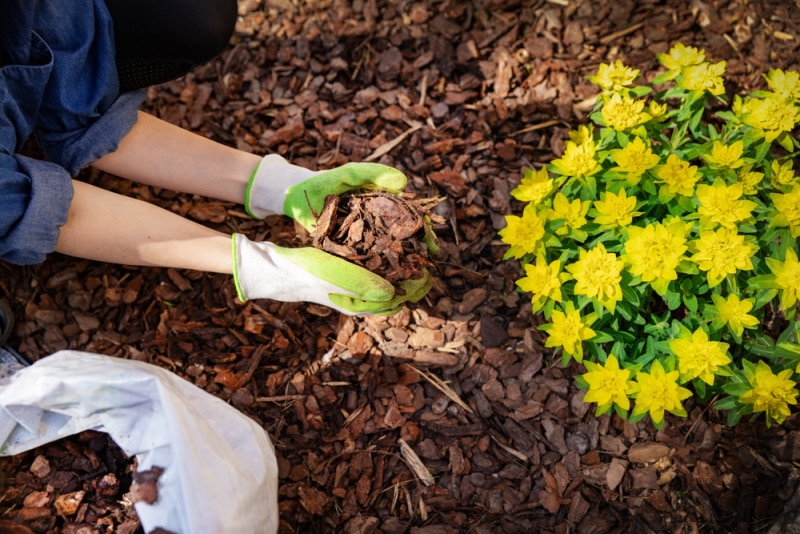When Is the Best Time to Mulch Your Lawn? How to Get the Best Results
-
Pete Ortiz
- Last updated:

Mulching can make all the difference in growing a gorgeous, thriving garden, yet it’s easy to forget a particularly crucial landscaping element that also benefits from the extra care. It’s likely also one that needs to look its best to make your yard stand out.
Lawns love mulch. Recycled clippings do wonders for you and your grass, making a substantial difference in how much effort you have to put in and the results you enjoy. By mulching throughout the growing season, you’ll have a lush green lawn with minimal effort.
When Is the Best Time to Mulch the Lawn?
Your location and type of grass will primarily determine the best time to begin mulching your lawn when you mow.
Start mulching your lawn after the first few cuts of the growing season. Warm-season grasses should begin enjoying their first mulch layers in late spring–early summer. Mulch cool-season grasses during their later growth period in early fall.
After the first few cuts, you can mulch throughout the growing season if the conditions allow. Clippings should be no more than one inch long or a third of the grass’s height, whichever is less. Cut cool-season grasses to 2.5–3.5 inches and warm-season grasses about an inch shorter.
Taller grass will shade out weeds and establish deeper roots for more efficient nutrient absorption. Keeping the clippings short allows them to fall through the grass and reach the ground, where they will break down faster.
You will typically have to mow multiple times each week to keep the clippings short. If the grass grows rapidly, you may need to bag some clippings to prevent the mulch layer from becoming too thick.
Spring mulching and fertilizing aren’t as crucial for most grasses. The first several cuts of warm-season grasses should be low to encourage healthier growth, limit thatch buildup, and set your lawn up for a more consistent height. For cool-season grasses, the rapid spring growth doesn’t need much help from mulch, and applying fertilizer can set it up for more damage in the summer months.

When You Shouldn’t Mulch Your Lawn
Before deciding to mulch, you’ll need the proper equipment and ideal lawn conditions. A mulching mower with a mulching blade is the preferred tool for the job, as it optimizes the shredding and spreading of the grass for the best results.
If you have a standard push mower, you may be able to add a mulching plug and even upgrade the blade to a mulching blade. When planning to mulch, keeping a clean mower deck and sharp blades become critical in ensuring even dispersal and finer clippings that will break down quickly.
Once you have the right equipment, wait for the proper lawn conditions to begin mulching. While the practice can be essential during the growing season, there are crucial times when you should avoid mulching your lawn.
Weeds or Diseases
Lawns need to be free of weeds and diseases before mulching. Since you’re recirculating any clipped plants back into the lawn, you’ll be moving weed seeds around the ground and potentially spreading infections. Bagging clippings will help remove disease-causing organisms and keep weeds in check until you can apply a treatment.
Wet or Overgrown Grass
Don’t mulch when the grass is overgrown or wet. Long clippings cover the lawn and block water and nutrients from reaching the soil. Rather than feed the beneficial microbes, these longer grass pieces will add to the thatch layer.
Wet grass makes poor mulch. The grass blades will clump together and distribute unevenly across the lawn, causing patches of damage to over-mulched areas. As the clippings circulate around the blade, they’ll clump up on the deck, causing performance issues and increasing the need to clean the mower.
You can also repurpose bagged healthy grass clippings to save on landfill waste and help your garden in compost or as mulch. Don’t feel obligated to mulch every time you mow. There are always options to reduce waste with any method.
Overgrown Thatch
You can mulch with a thatch layer less than ½ inch thick. Once the thatch exceeds ½ inch in thickness, it creates a barrier that keeps the clippings from reaching the microorganisms in the soil. Dethatching with a thatching rake, power rake, or vertical mower will be a critical first step, but you can recycle the thatch into the compost pile or the garden as mulch.
Leaves on the Ground
Wet leaves on the ground can cause the same issues as wet grass. A light covering of dry leaves won’t cause problems if you mulch and could even benefit your lawn further. But you will need to mow more frequently when leaves are involved, and grass growth hasn’t slowed significantly. If the leaf buildup is thick, it’s best to bag and repurpose them elsewhere to avoid smothering the lawn.
Why Should You Mulch Your Lawn?
Like your vegetable and flower garden, your lawn can get vital help from mulch in several ways to ensure it stays healthy and lush.
- Preventing weed growth
- Slowing evaporation to keep the lawn hydrated
- Regulating the soil temperature
With a unique nutritional makeup and particular growing needs, grass can benefit from mulching in several other ways.

Manage Thatch
Feeding microbes with grass clippings does more to help your lawn than improve the soil quality and fortify grass against disease. By feeding their populations, you allow the beneficial bacteria, fungi, and other microbes to become more efficient at decomposing the thatch layer.
Saving on fertilizing and watering will also help manage thatch, as an overabundance of both can cause thatch to accumulate quickly. Overall, a mulching focus will encourage the kind of mowing frequency, soil quality, and microbe health that keeps thatch to a minimum.
Add Moisture and Nutrients
Grass consists of 80–85% water and contains crucial soil components, including roughly 4% nitrogen, 2% potassium, and 1% phosphorus. Adding an even layer of clippings back into the lawn will restore moisture and vital nutrients to the ground. Decomposing grass clippings feed beneficial microorganisms, which repay you by pulling out nutrients and working more efficiently to prevent disease.
Mulching allows you to reduce your reliance on your sprinkler and replace up to 25% of your fertilizer needs with recycled grass clippings. You can save money on water and fertilizer while helping the environment through reduced water usage and yard waste.
Improve Soil Quality
As they consume the mulch, microorganisms in the soil produce humus. Humus is a dark brown/black organic substance that loosens the soil to improve aeration, allowing water and oxygen to move efficiently toward the roots.
Grass takes in moisture and stores nutrients easily in humus, allowing it to grow upward. Meanwhile, the roots will have a forgiving yet stable soil to flourish. Fertilizer will replenish nutrients to feed your lawn, but grass clippings will create a more beneficial soil structure.
Conclusion
Mulched grass clippings do much more than save you the effort of emptying a mower bag, offering a cost-effective and efficient way to keep your lawn healthy.
The equipment and conditions need to be perfect to get the best results. Mulching without paying attention to the lawn height, thatch thickness, grass health, or a host of other variables could cause far more issues down the road. Save yourself time and money by inspecting your lawn, maintaining your equipment, and mulching as much as possible during the growing season.
Featured Image Credit: Ozgur Coskun, Shutterstock
Contents



